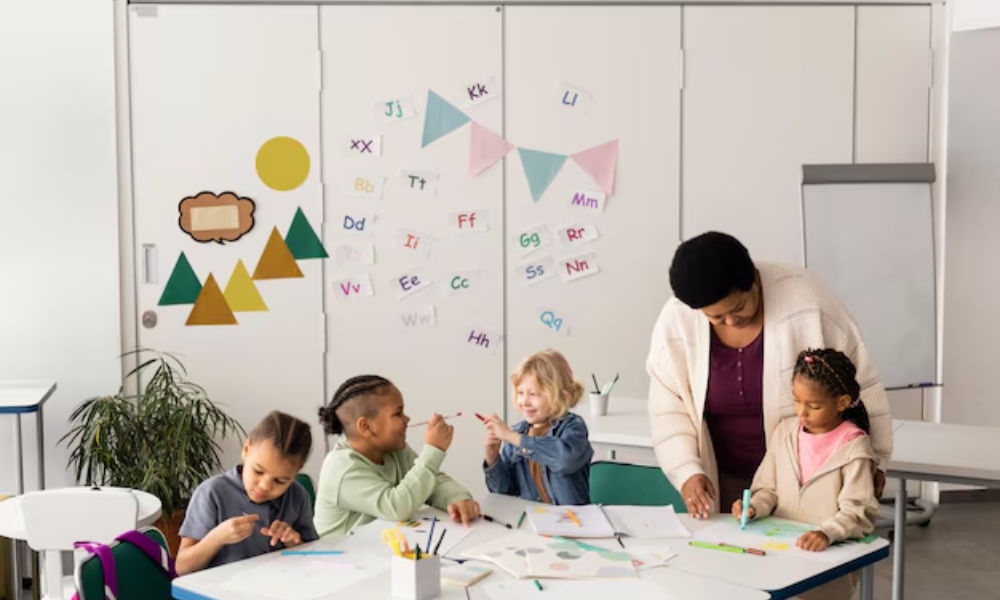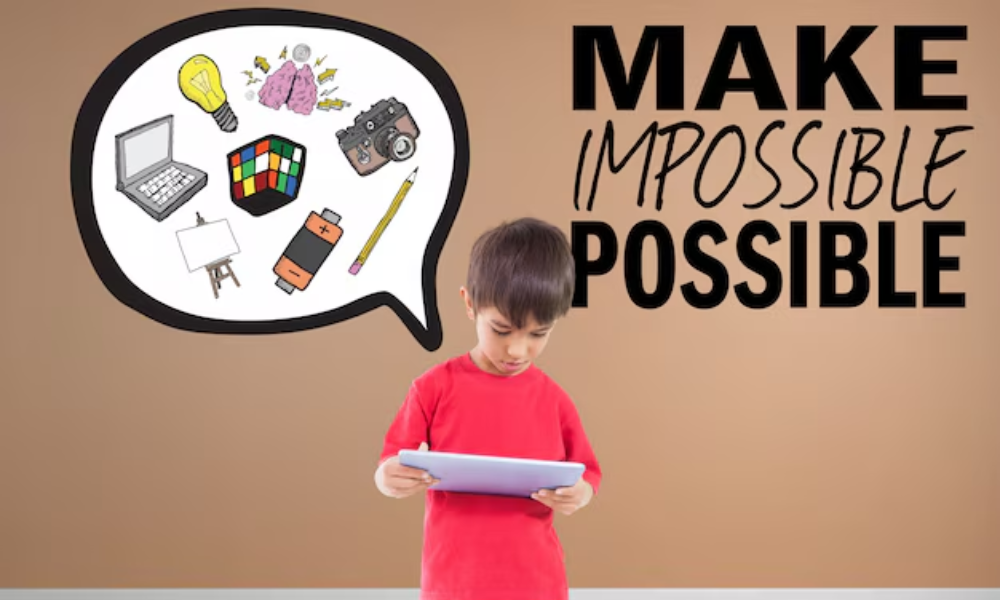A great teacher’s influence goes far beyond a single day; it shapes a child’s future, their attitude toward learning, and even how they treat others.
Parents want to know the kind of teacher guiding their child, teenagers hope for role models who understand them, and college-going students look back at teachers who helped them reach the next step.
By focusing on what makes a teacher genuinely effective—rather than planning temporary welcome events—we show what it takes to ensure lasting “academic success,” a “positive classroom environment,” and continuous “teaching excellence.”
Students who understand these qualities learn to respect and appreciate good educators, while parents can trust that their children are in capable hands.
Clear and Caring Communication between teacher and students

Instead of focusing on activities like decorating classrooms for a new school year, we now highlight how good teachers communicate clearly and care about their students’ understanding every day.
When teachers speak in a way that is easy to understand, ask for feedback, and encourage questions, students feel comfortable and valued.
This goes beyond a one-time welcome—it ensures that learners, even those as young as 12, never feel left behind.
- A teacher with strong communication skills:
- Explains tough ideas in simple terms
- Listens to student feedback
- Encourages open dialogue
This shift from short-term welcoming gestures to ongoing, caring communication helps students gain confidence and parents see real growth over time.
Deep Subject Knowledge and Love for Learning

Now, we recognize that a great teacher has strong subject knowledge and a passion for learning that never fades.
Such “traits of good educators” include updating their methods, attending workshops, and staying current with new discoveries in their field.
Rather than relying on a quick activity to set the tone, good teachers’ expertise assures parents that lessons will always be accurate and inspiring.
Students respect educators who can connect what they’re learning to real life, making even the most challenging subjects feel more meaningful.
Empathy, Understanding, and Support

Instead of simply greeting students with a friendly “Welcome back!” sign, great teachers show genuine care for their students’ emotional well-being every day.
They understand that each child is unique, with different worries, interests, and dreams. This kind of empathy helps students feel safe and encourages them to share their thoughts without fear.
By focusing on empathy rather than one-time events, we highlight a teacher’s ability to build trust and comfort. Parents appreciate knowing that the teacher sees their child as an individual, not just another face in the classroom.
Teens value a teacher who understands their personal struggles, and college-bound students remember these caring adults who guided them with kindness.
Adaptability and Flexibility in Teaching Styles

A great teacher can switch from group discussions to hands-on projects if they see that students learn better that way. They might use stories, videos, experiments, or even short quizzes to keep lessons fresh and interesting.
This shift from a single welcoming approach to flexible, year-round teaching styles ensures that every student—shy or outgoing, fast learner or one who needs more time—has a fair chance. Parents notice that their children remain curious and motivated, and teenagers feel included because the lessons speak to their learning style.
Creating a Positive Classroom Environment

Instead of focusing on first-day decorations, we now stress the teacher’s role in building a respectful, friendly classroom environment all year. A “positive classroom environment” goes beyond colorful posters; it means setting rules that are fair, listening to student opinions, and encouraging everyone to support each other.
By shifting focus from a single welcoming moment to year-long positivity, students grow more confident, participate more, and learn to respect one another. Parents and college-going students see that this environment shapes good citizens who know how to work together.
Strong Classroom Management and Organization

In the past, we might have suggested ice-breaker games. Now, we highlight that good teachers manage their classrooms by setting clear expectations, routines, and schedules. Good organization keeps lessons running smoothly, helps students stay on track, and reduces stress for everyone.
By focusing on strong management rather than a temporary “welcome back” approach, parents see that the teacher values their time and their child’s progress. Students learn how to be responsible and respect rules, skills that help them succeed in school and beyond.
Encouraging Goal-Setting and Independent Learning

They show students how to break big tasks into smaller steps, monitor their own progress, and celebrate their achievements. These “characteristics of a great teacher” include teaching students how to learn on their own, ask questions, and find solutions.
This shift from short-term excitement to long-term growth helps students become independent thinkers, preparing them for college challenges and real-world problems. Parents appreciate that this guidance builds life skills, not just short-lived motivation.
Inclusivity and Cultural Sensitivity

Inclusivity means recognizing that students come from various backgrounds, speak different languages, and have unique experiences. Teachers who respect these differences create lessons that reflect many perspectives.
By moving from a single welcoming event to ongoing inclusivity, we show that a teacher’s influence helps students become open-minded citizens. Teenagers learn to appreciate people from all walks of life, and parents trust that the classroom supports their children’s sense of identity and belonging.
Inspiring Curiosity, Creativity, and Critical Thinking

Great teachers ask challenging questions, encourage debate, and let students discover answers on their own. They might:
- Present real-world problems and ask students to find solutions
- Encourage group discussions where everyone shares their ideas
- Allow projects that let students get creative and explore their interests
This shift from short-term fun to sustained creativity and critical thinking leads to true “academic success.” Students learn how to think for themselves, preparing them for college-level work and careers where creativity is key.
Ethical and Professional Conduct

Good teachers keep their promises, treat every student fairly, and admit their mistakes. They show by example how to be a good human being.
This long-lasting ethical influence means more than a one-time warm welcome. It shapes students’ values, teaching them about responsibility and kindness. Parents feel secure knowing their children are learning from someone they can respect and trust every day.
Conclusion
In the digital era, educators must teach pupils how to connect and protect one another. Projects may need both real and virtual cooperation. It is now simpler than ever to connect with people of different faiths and cultures. A modern educator must be able to utilize technology securely and effectively. They must be aware of contemporary threats and support pupils in comprehending and dealing with them.









